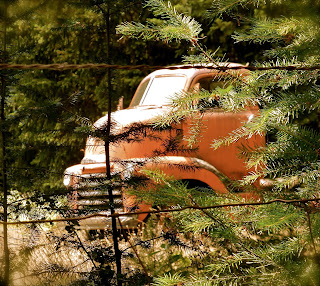… in pictures
January: an annual trip to the
Seattle area includes an annual trip to Moto Guzzi heaven: Moto
International. The church has
coveted the California 1400 Touring for twelve months now…
 |
| By clicking on any picture, you can make all of 'em expand, if you dare. |
… and although I’ve been very
good, apparently Santa didn’t get the memo on this.
Returning to California, Folsom Lake approaches historic
lows as the drought continues.
And we find the first of many photogenic old trucks.
February: There’s still enough water in Folsom Lake to allow Edward
(the lab mix) a shot at his favorite pastime.
March: The “Church” is ready to try out more road worthy (less
gravel worthy) tires on the BMW.
Old truck II
April: We search for our roots knowing that “the old timer” (Dad)
worked on the Tonopah and Tidewater Railroad as a kid out of high school.
We found the T and T station at Rhyolite but also found out that
Dad, in his youth never worked this far north on the line.
On the same trip, we visited the lowest point in the United
States somewhat disappointed that we didn’t run across the debate of a major US
political party at this place.
The subtle colors of Death Valley inspire awe.
The drive home on the Beemer, however, still inspires
shivers. 28 degrees and dropping
over Emigrant Pass. Damned happy, I was, to be sporting those new tires, I'll tell you what!
June: We revisit old stomping grounds in Tuolumne County including
Pinecrest Lake…
…and Sonora Pass.
July: Yet another old truck
And a visit to the incomparable Big Sur Coast with its rocky
shoals…
…and perched security posts.
Still, our Pacific Coast north of San Francisco Bay offers
much to appreciate.
In another adventure, we revisit Glenn County’s Simpson Camp
after a 50 year absence; the first roughing-it sojourn in the worthy Subaru
Forester.
August included a planned loop
including a trip through Bend, OR, cut short by the mechanical failure of my
riding buddy’s Stelvio,
…prompting my smoky trip to the coast through the
fire-ravaged hills along CA 299.
Fixing what ails those of us who age took me out of the
saddle for a longer-than-expected period.
September’s trial run on the Guzzi
proved I wasn’t yet ready for the long haul.
October: So we explored in the
pickup and on foot. The upside is
that companion Edward could join on adventures.
Old Truck IV
And we discover a nearly drained Lake Pillsbury. It seems the drought affected everyone,
not just those of us who used to live near Folsom Lake.
November: Trips to Chico found us crossing the Sacramento Valley
enjoying its subtle beauties…
…and some of her denizens.
An old Victorian reminds us that something did happen in
Artois, a town that I-5 later passed right by.
Rather than cook on Thanksgiving we sought out a hike at
Point Reyes…
…and enjoyed a close up of a member of its repopulating elk
herd.
December found us in Texas - our home state’s greatest competitor
for both jobs and cool. A dogtrot
cabin served as a nice place for a little break.
Not an Old Truck I
The top of a red granite knob proved that Texas, too, has
some pristine places worth our pause.
Shot of the Year Second
Runner Up: “I’ll have the
Bourbon. On the porch, please.”
First Runner Up: “Wha’chu lookin’ at?”
Shot of the Year: “The Works of Man and Nature.”
The Church of the Open Road wishes all a pleasurable and adventuresome
2016. We hope to see you on the
road. Ride safe.
© 2015
Church of the Open Road Press































































